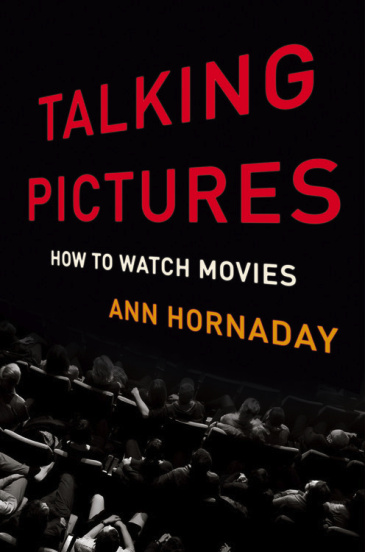Talking Pictures
- By Ann Hornaday
- Basic Books
- 320 pp.
- Reviewed by Paul J. McCarren
- July 28, 2018
An esteemed film critic examines the story behind the camera.

In her introduction, Hornaday says she hopes her book will help us savor the huge range of details that goes into making a movie. The book is necessary, she repeatedly notes, because the detailed, behind-the-scenes work of filmmaking isn’t visible in the final product.
“We don’t need to know how much research actors have done to create the worlds they inhabit on screen. We just need to enter it with them.” Or, “The best visual effects are those you don’t notice at all.” And again, “Production design should be invisible.”
To pull the curtain back, the author gives us an insider’s look at what usually goes unnoticed. She begins her exploration with a chapter on the screenplay because, she says, “The screenplay serves as the founding document of every film.”
As an example of skillful writing, she points to the first information-packed sequence in Francis Ford Coppola’s screenplay for “The Godfather.” The script moves back and forth from subdued conversations in the Don’s dim office to lively chatter at a sunlit wedding reception, where Michael arrives with his new girlfriend, Kay, and must explain the peculiarity of his family’s business, saying at one point, “That’s my family, Kay. That’s not me.”
Hornaday says Coppola introduces the Corleones so clearly and economically that he’s “made sure we’ll eagerly tag along on whatever journey they take.”
Each chapter in Talking Pictures is broken into short sections kicked off by a few simple questions. Some of Hornaday’s answers seem obvious: “For a movie to work, we must believe it.” But most of her insights are enlightening. For instance, when she learns from screenwriter Guillermo Arriaga that he pays little attention to backstories for his characters, and realizes, “This lack of detail has resulted in a lack of credibility in his films.”
She quotes the pithy opinions of other film greats to convey her insights. About acting: “You come to work on time, know your lines and don’t bump into the furniture” (Spencer Tracy); “To have a career in the movies, the wisest thing was to do absolutely nothing at all. And that is more or less what I’ve done” (Alec Guinness).
About bad cinematography: “pictures of people talking!” (Alfred Hitchcock). About directing: “For some strange reason, I always look the most talented when I’m working with the most talented people” (Alan J. Pakula).
Hornaday is clear in describing which creative choices work and which don’t. Director Christopher Nolan’s reputation for obscuring dialogue with an overlay of sound effects gives a final result that is “provocative at best and unintelligible at worst.” In contrast, director Robert Altman is a master “of realism in sound” for designing a technique that keeps overlapping dialogue from being garbled.
Occasionally, she piles up names in lists that crawl by in a blur, like final credits. But most of her lists work as helpful hints, as if to say: “Notice how these people work; now compare that to the methods of this other bunch.”
Hornaday doesn’t skimp on technical details (we learn about double-dolly shots, a “Dutch angle,” and the Steadicam), but she folds such information into anecdotes about individuals fiddling with these technical elements.
She also stresses non-technical skills, such as improvisation, and she gives good luck its due. She tells us that a famous tracking shot (following the main character in “Goodfellas” entering a side door of a nightclub) was the result of Martin Scorsese’s improvising when he was suddenly told he couldn’t film at the club’s front entrance.
And a “Field of Dreams” shot of a character disappearing into a mist-shrouded cornfield came about because “an actual, shelf-like fogbank rolled in suddenly and unexpectedly” — a bit of luck that proves an opinion she’d earlier cited from Orson Welles: a film director’s role is to “preside over accidents.”
In her epilogue, Hornaday says that appreciating a movie comes down to one question: Was the film worth making? I can’t yet tell if her book has sharpened my ability to ask and answer that question. But I’m ready to find out the next time I go to the movies.
[Editor's note: This review originally ran in 2017.]
Paul J. McCarren, S.J., lives in southern Maryland, where he continues to work on a series of Simple Guides to the Bible. He occasionally leaves the quiet of the boondocks to teach in DC at the Dog Tag/G.U. business program for veterans.
_80_122.png)
